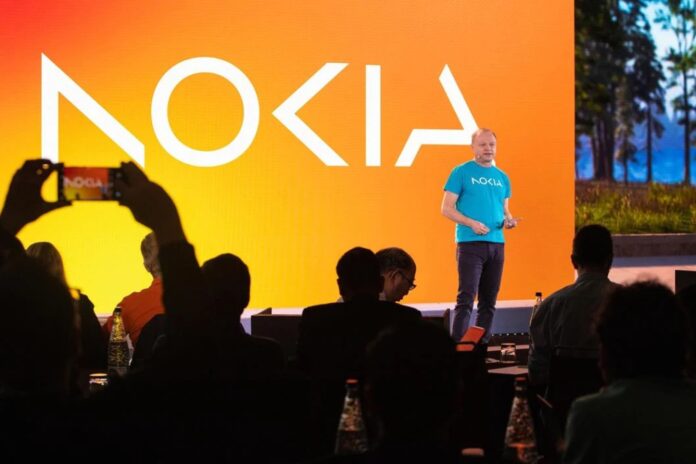Lundmark will be replaced by Justin Hotard who currently heads up the Data Centre & AI Group at Intel. Hmmm
Nokia’s CEO Pekka Lundmark (pictured above) is to step down and will be replaced by Justin Hotard, who is currently EVP and GM of the Data Centre & AI Group at Intel, on 1 April. Lundmark was appointed in 2020 to turn the company round but Nokia’s share price and revenue have remained stagnant for pretty much a decade. Lundmark will remain at the company until the end of this year in an advisory role. The shift towards the US markets, AI and data centres was flagged last October.
Hotard has more than 25 years’ experience with global technology companies. Prior to his current job, he held senior roles at technology companies, including Hewlett Packard Enterprise and NCR Corporation. He will be based at Nokia’s headquarters in Espoo, Finland.
Super cycles and transitions
Hotard described the market as being “at the start of a super cycle with AI,” and compared it to the the rise of the internet as a public communications medium 20 years ago. He added that “these major market transitions” give birth to new organisations and incumbents must reinvent themselves or fail. He added, “My focus will be to accelerate the transformation journey”.
The trouble is, Intel could be described as just such an incumbent that has failed, spectacularly, to make the transition to the era of AI and data centres. Its CEO, Pat Gelsinger, was obliged to leave as his turnaround plan was judged too expensive and slow.
When probed on his strategy, Hotard explained that networking is second only to compute hardware regarding levels of investment in AI data centres and views Nokia’s ongoing $2.3 billion purchase of optical vendor Infinera, announced last June, as key. It is due to complete in the first half of this year.
At the time the acquisition was announced, Infinera’s CEO, David Heard, stated, “We believe Nokia is an excellent partner and together we will have greater scale and deeper resources to set the pace of innovation and address rapidly changing customer needs at a time when optics are more important than ever – across telecom networks, inter-data centre applications, and now inside the data centre. This combination will further leverage our vertically integrated optical semiconductor technologies.”
End of the exec line for Lundmark
Maybe the only thing that is surprising about the end of Lundmark’s tenure is how long it lasted after Ericsson landed the 5G contract with AT&T in December 2023, worth up to €14 billion over five years, displacing Nokia. According to this morning’s press conference, it seems Lundmark indicated his desire to move away from executive roles in spring 2024. However, when the Financial Times [subscription needed] reported a change of leadership was in the pipeline “to revive falling sales” last September, Nokia flatly denied it.
Today Lundmark said in a statement, “This is the right time for me to move on. I have led listed companies for more than two decades and although I do not plan to stop working, I want to move on from executive roles to work in a different capacity, such as a board professional. Justin is a great choice for Nokia and I look forward to working with him on a smooth transition.”
Sari Baldauf, Chair of Nokia’s Board of Directors, announced the change and commented, “I am delighted to welcome Justin to Nokia. He has a strong track record of accelerating growth in technology companies along with vast expertise in AI and data centre markets, which are critical areas for Nokia’s future growth. In his previous positions, and throughout the selection process, he has demonstrated the strategic insight, vision, leadership and value creation mindset required for a CEO of Nokia”.
Time will tell.


